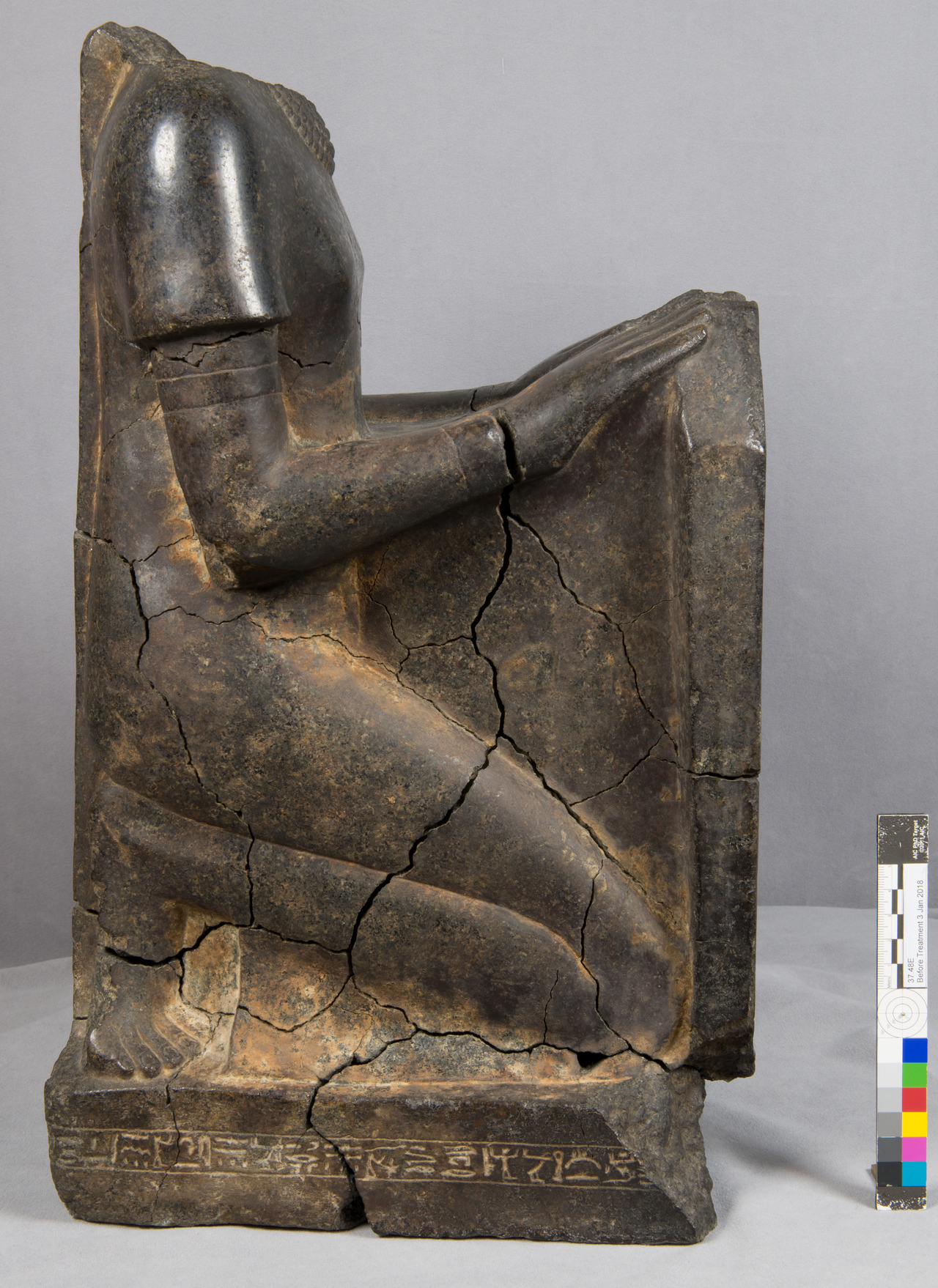http://brooklynmuseum.tumblr.com/post/179927667017/why-is-this-ancient-egyptian-sculpture-cracked-in

Why is this ancient Egyptian sculpture cracked? In preparation for the
upcoming touring exhibition Striking Power: Iconoclasm in Ancient Egypt, the curator wondered what caused the cracking of the stone? Ancient Egyptians sometimes deliberately destroyed or damaged sculptures during campaigns of religious or political change. Could this sculpture have been intentionally damaged?
Conservation examined the sculpture and found no evidence of tool marks or other vandalism. The cracks do not go all the way through the stone suggesting a type of internal stress. The curator wondered if this was an example of a sculpture that had been in a fire which could cause
cracking.
Brooklyn Museum conservators worked with scientists from the Network Initiative for Conservation Science program at the Met to analyze the stone and determine the cause of the cracks. A sample was taken from the interior of the
sculpture and examined using x-ray diffraction (XRD), to identify the minerals in the stone, and then further analyzed using scanning electron microscopy with energy dispersive spectroscopy (SEM/EDS) to look at the elemental composition and the interior grain degradation and micro-cracking. Scientists
discovered that many of the minerals in the stone had changed form. The results indicate that this stone, a type of granite called tonalite, is rich in iron-based minerals which expand over time when exposed to moisture. The internal increase in volume of the minerals created internal stress which caused the stone to crack.
Next conservation will determine the best way to mount and travel this fragile sculpture as we prepare it to go out on loan.
Posted by Erin Anderson
-- Sent from my Linux system.
No comments:
Post a Comment